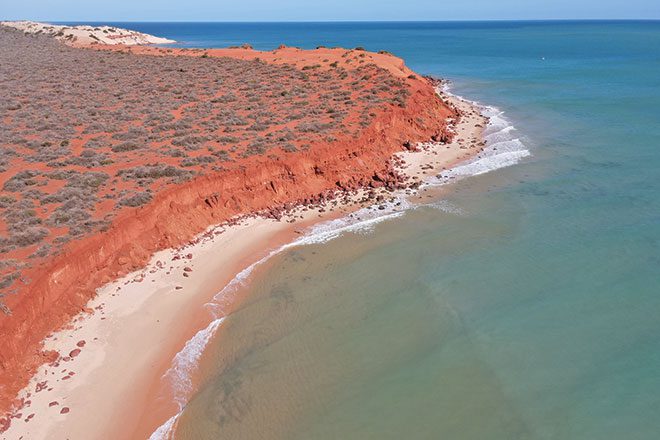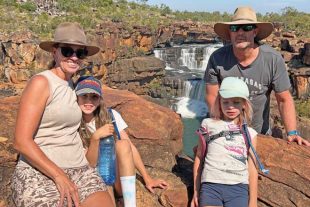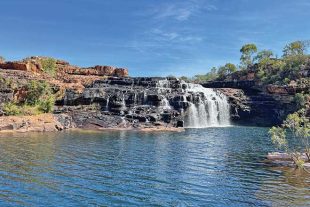My family and I are now three months into our eight-month trip around Australia.
We’re currently heading north along the stunning Western Australian coastline, as this is where we wanted to spend most of our time exploring, being the furthest away from our hometown of Bundaberg.
With so many sights featuring, I’ll do my best to stay focused on the fishing.
As we don’t have a tinnie, most of the fishing is land-based with a little on the kayak, as well as hiring boats and jumping on the occasional charter.
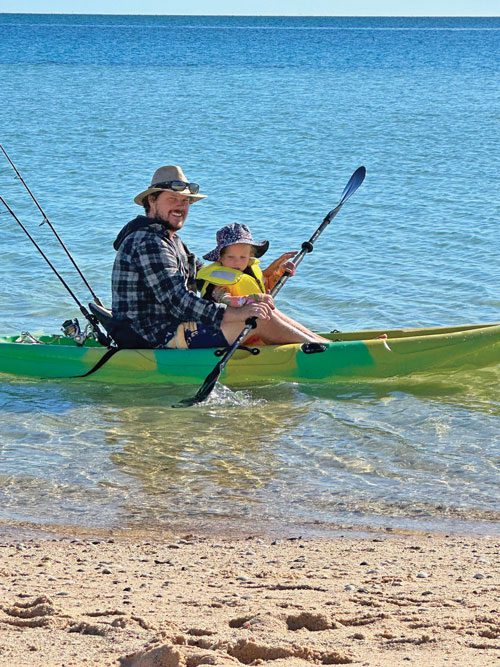
If you’re planning to travel Australia and unsure whether or not to take a rooftop tinnie, I would say prioritise it.
There are so many locations around the country to launch from, with access to great fishing.
We made our way towards the World Heritage listed Shark Bay area, which is part of the Gascoyne Coast Bioregion.
As mentioned in the previous article, Western Australia’s fishing laws are strict and vary depending on the region.
The recfishwest app and brochure – available at information centres and online – is very useful because size and bag limits are heavily enforced, plus there are a lot of sanctuary zones as you head further north.
After stopping in at the Overlander Roadhouse, we continued on to a great free camp – WikiCamps Scenic View and Telstra Mast – where we had a fire and spent the night before heading to Monkey Mia.
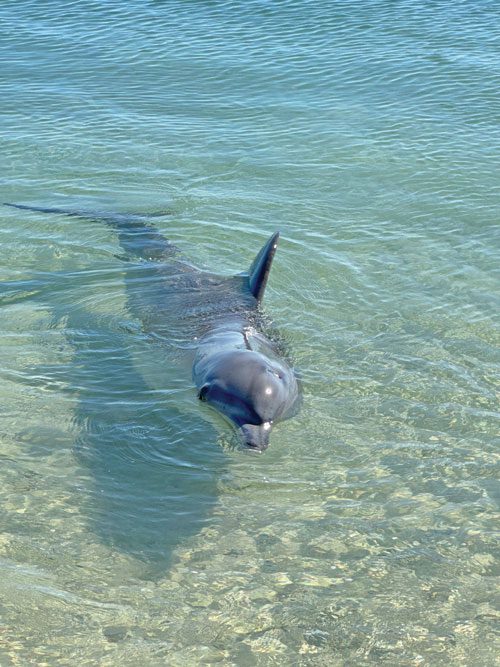
Monkey Mia
After checking out a few of the sights along the way, such as Eagle Bluff, we settled in at the RAC Monkey Mia Dolphin Resort for a handful of days – a little fancier than we’re used to – so we made the most of the great facilities, namely the bar and pool.
The family enjoyed watching the dolphin feeding, but not so much the over-friendly emus that provided a few laughs and screams across the caravan park as they helped themselves to any food or rubbish bags left out.
On the fishing front, I was impressed – considering the number of tourists who visit the area.
I put the kayak in and had fun drifting outside the dolphin sanctuary zone, catching some solid whiting and undersized flathead on peeled prawns and worms.
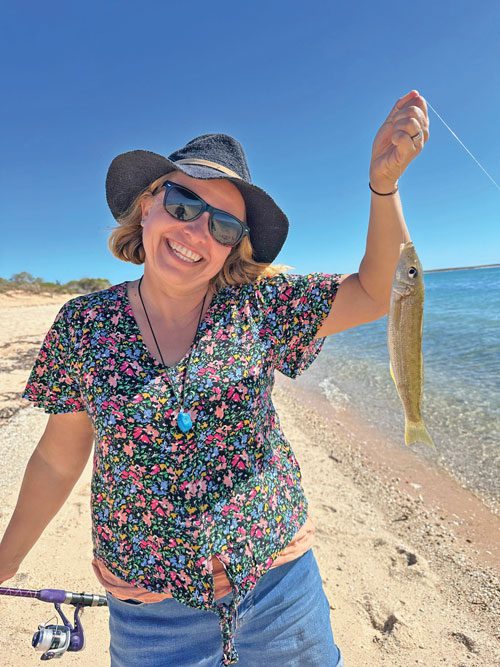
I hooked a decent bartail flathead at about 50cm on a pink Squidgies only to drop it trying to lift it into the kayak.
The kids also caught some nice whiting from the beach on their little Ugly Stik Tackleratz Kids Combo.
After doing a bit of research, I threw the crab dillies in off the kayak and managed a dozen nice blue swimmer crabs in a couple of hours only 70m from the shore, which were a welcome feed and good fun from the ‘yak.
Definitely worth doing if you’re visiting the area.
Denham
Next up was Denham, a great little seaside town on the western side of Shark Bay’s Peron Peninsula only 30 minutes from Monkey Mia.
The kids loved the very informative Ocean Park Aquarium, especially the shark feeding.
It became clear with the number of 6-8m trailer boats getting about that Denham was a fishing mecca.
Apparently, snapper stocks were once overfished but are now back to healthy populations, with larger boats accessing areas such as the tip of Dirk Hartog Island and Steep Point.
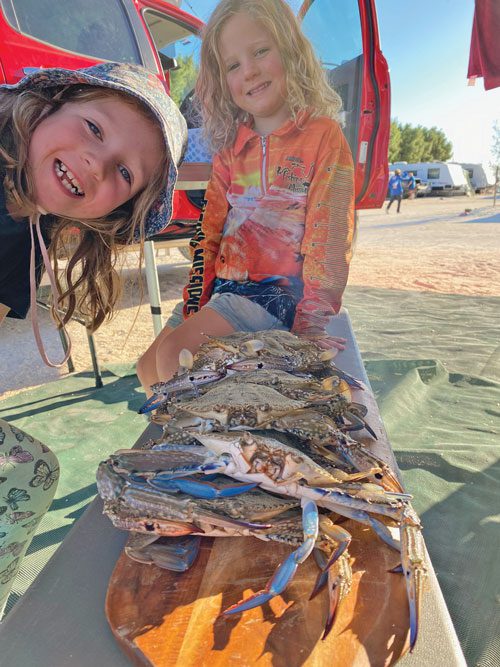
With a great weather forecast, I decided to hire a boat from Shark Bay Boat Hire, and I only needed my Queensland boat licence for this.
It was a 5.99 Polycraft with a 175hp Honda, which certainly gave it plenty of power.
I was definitely familiar with Polycraft, the boats being built in my hometown of Bundaberg, Australia.
I took the girls out for a look along the coast where we spotted eagle rays and caught and released some spanish flag fish that provided great entertainment.
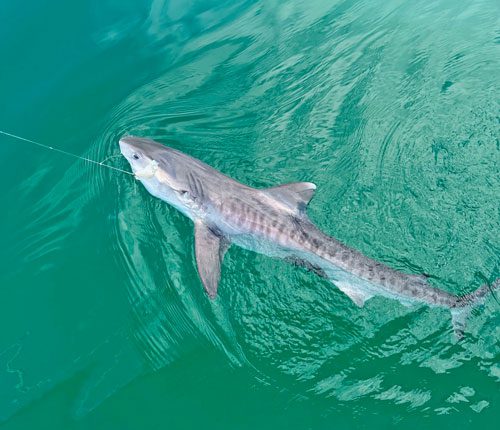
I dropped my wife and youngest daughter back to the ramp and took my eldest daughter Zahlee for another fish.
I punched out 15NM, two-thirds of the way to Dirk Hartog Island, in glassy conditions.
It didn’t take long to find snapper, or should I say squire, with most fish undersized.
Nonetheless, we had great fun pulling them in one after the other using squid on paternoster rigs in only 8m.
We managed a solid estuary cod and a couple of nice black snapper – known as grass sweetlip or blue lined emperor in Queensland.
We also caught a couple of school mackerel and golden trevally casting and retrieving Halco Twisty Golds at the channel markers.
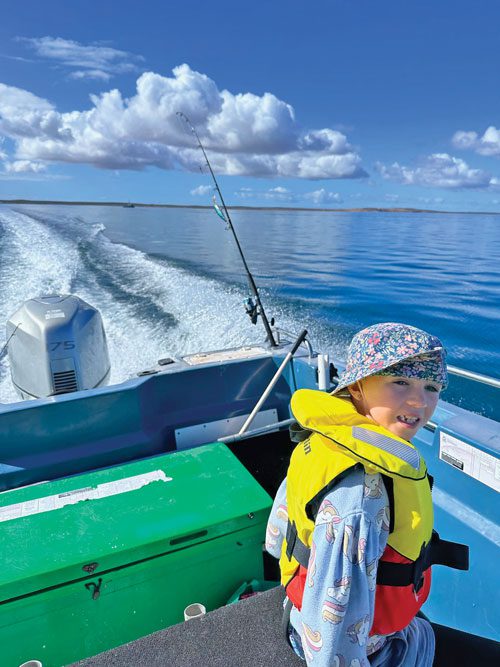
Though the highlight for my daughter was catching and releasing a juvenile tiger shark – these are in high numbers throughout the region.
While based at Denham Seaside Caravan Park, we dropped the tyre pressure and headed up to the tip of Francois Peron National Park to enjoy the sights.
What a stunning part of the world!
At Bottle Bay we had fun catching dart as a very large tiger shark cruised the shallows, metres from the beach.
The temptation to go swimming miraculously disappeared.
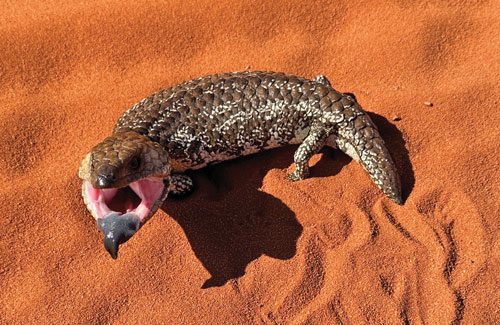
Leaving Shark Bay, we headed further north and stayed a couple of nights at a great coastal camp called Gladstone Bay.
After scouting the shoreline, the water seemed rather lifeless – not even a baitfish or rock crab.
I wondered if this was due to the high levels of salinity that impacted parts of Shark Bay, Shelly Beach as an example.
It didn’t bother me because it was a magic location and once again I had a campfire, so I put my energy into a camp-oven silverside and a couple of minor running repairs on the caravan.
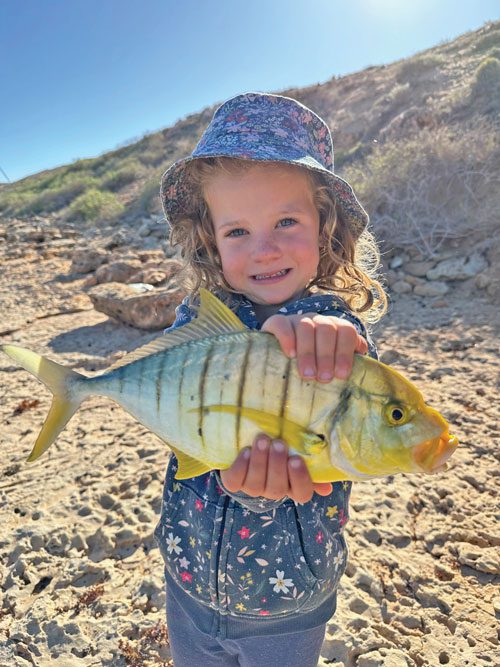
Warroora Station
Next up was Carnarvon – known as the food bowl of Western Australia – situated between Shark Bay and the Ningaloo Coast World Heritage areas.
This region is known for its monster land-based mulloway.
Unfortunately, due to some windy weather, there wasn’t much land-based fishing done, with an onshore swell, dirty water and lots of weed to grapple.
We stayed for a couple of nights, checked out the town and grabbed a few groceries and supplies before our next stop at Warroora Homestead.
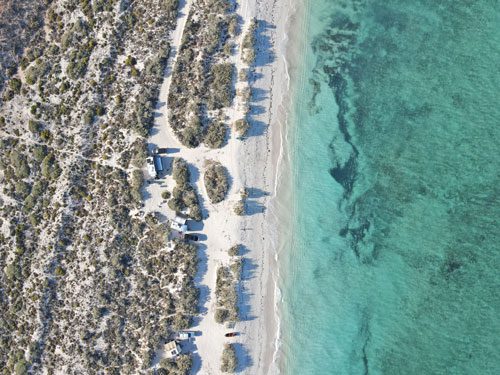
The road in was heavily corrugated, so I dropped the tyre pressure in the car and van.
We set up just as the rain set in, though it didn’t put a dampener on exploring Warroora, which is a magic part of the Ningaloo Coast.
At the homestead, we ran into a couple of families we had met on the road, so when the kids played, we caught up and shared our adventures over a few beverages.
There were some incredible coastal camps in these parts and I was a little envious of the campers launching and retrieving their tinnies at places such as the Lagoon, Black Moon
Cliff, Stevens Camp, Elles Beach and Maggies.
You can book a site at these campgrounds on the Park Stay Western Australia website, which requires a bit of patience.
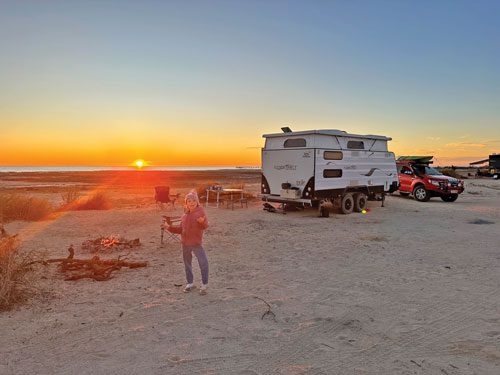
Be mindful that some of the more popular Western Australia coastal camps can book out six months in advance, so if there’s somewhere you really want to stay and know your dates, book ahead if possible.
When fishing the Ningaloo Coast be mindful that there are some sanctuary zones in these parts, though they are clearly marked.
Staying at the homestead gave us access to a couple of private beaches, where we caught spangled emperor using squid on floats and a couple of rock cod.
Whether due to weed or coral, I seemed to do a lot of fishing with floating rigs – these work well in this type of area and present bait more naturally.
Spangled emperor are certainly one of the most common species encountered and targeted by land-based fishos along the Ningaloo Coast.
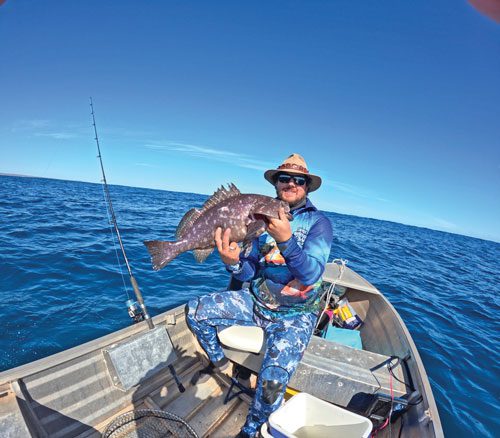
Our next spot was the Ridge at 14 Mile Beach, one of our favourite camps.
This is a highly sought-after camp spot and when you get there you understand why – caravans parked metres from the crystal-clear water and tinnies dragged up onto the beach.
Our camp spot – Camp 12 the Ridge – was a cracker and overlooked the water, with a nice little beach and rock ledge where we and the kids caught a couple of squid and small golden trevally.
After getting to know our neighbour Greg, I was fortunate to be invited on a trip out in his rooftop tinnie, as he struggled to launch it with a bad knee.
Launching and retrieving tinnies can be a bit of a challenge here when the breeze is up because the waves dump on the shore, but it was clear Greg had been doing this for years and he had his system sorted.
We headed out and had a crack inside the breaking reef for squid and spangled emperor, but apart from a few red rock cod, we had little luck.
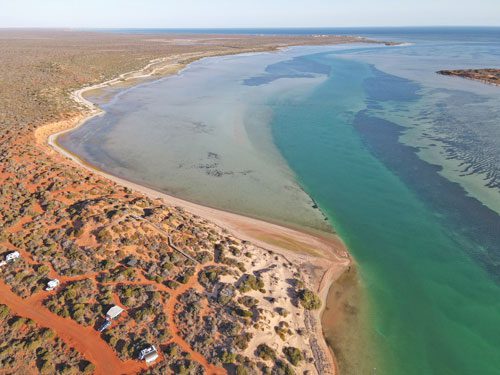
So, out we went behind the reef, and I was impressed at how well Greg navigated the breakers.
Once outside the reef, conditions were fairly good.
I trolled a Rapala X-Rap Magnum in 12m as Greg sounded about.
It didn’t take long to hook a nice rankin cod – my first even though they are endemic to the warmer coastal waters of Western Australia – such a cool looking and prized cod species.
We came across several large bait balls that were being smashed by large whaler sharks.
And being in such a small boat with an 8hp Suzuki, we felt it wise to leave them be and move on, eventually finding bait with less sharks present.
I cast a Halco Gold Twisty and it was smashed as it hit the water.
It was a great fight with blistering runs, but unfortunately it turned out to be a shark mackerel that was returned to the water.
This was followed by a couple of tea-leaf trevally.
The plan was to dive the cracks for a couple of crayfish on the way back to the beach, but we decided it wasn’t a good idea, given the current and swell.
Greg timed the swell to run the tinnie back up the beach expertly and we jumped out to drag it a couple of metres more to avoid being swamped by the waves sweeping up the beach.
We enjoyed this location for four nights and highly recommend booking here if you’re travelling Western Australia.
For now, we’re checking out Exmouth and Cape Range National Park, which I will share more on next article.
 Bush ‘n Beach Fishing Magazine Location reports & tips for fishing, boating, camping, kayaking, 4WDing in Queensland and Northern NSW
Bush ‘n Beach Fishing Magazine Location reports & tips for fishing, boating, camping, kayaking, 4WDing in Queensland and Northern NSW

